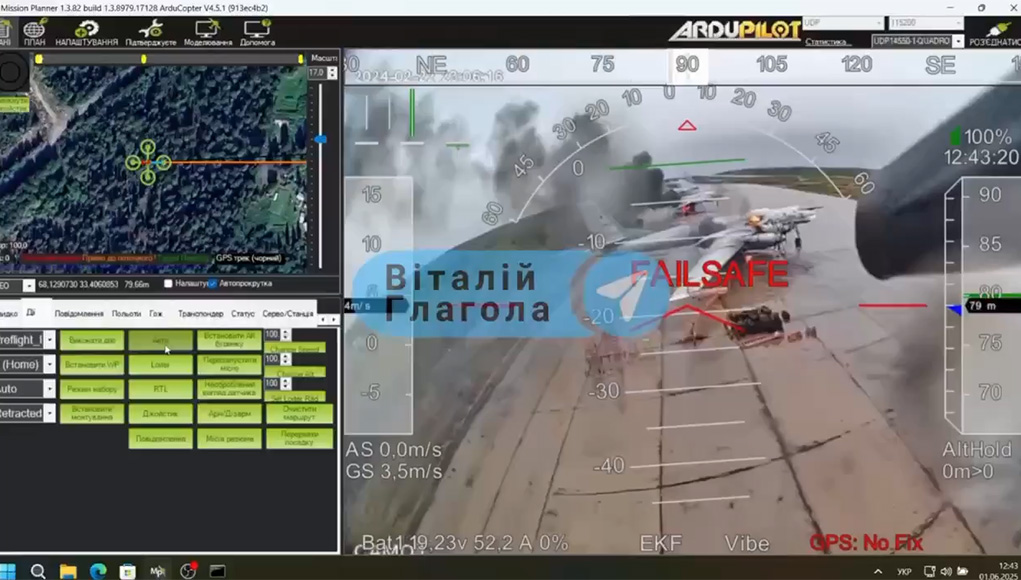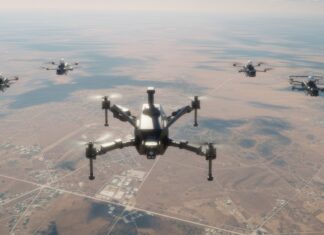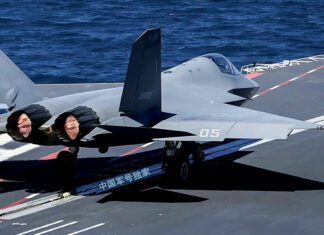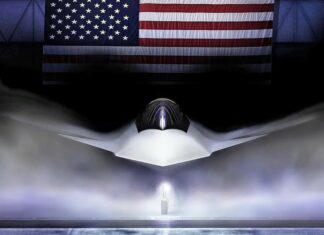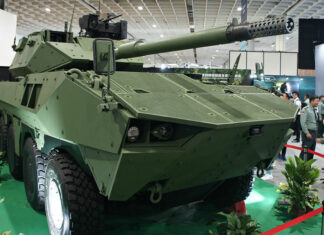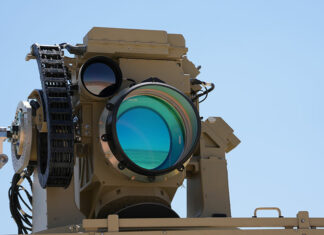On June 1, 2025, Ukraine’s Security Service (SBU) executed Operation “Web,” the largest long-range drone strike of the Russo-Ukraine War to date. For more than a year, Ukrainian planners discreetly prepared first-person-view (FPV) unmanned aerial systems (UAS) armed with explosive warheads, concealing them inside modified containerized launch modules loaded on trucks. When these mobile cabins reached positions near Russian airfields, remote-controlled hatches opened to release the drones toward parked strategic bombers and airborne early warning aircraft located in those bases, effectively bypassing standard defense measures.
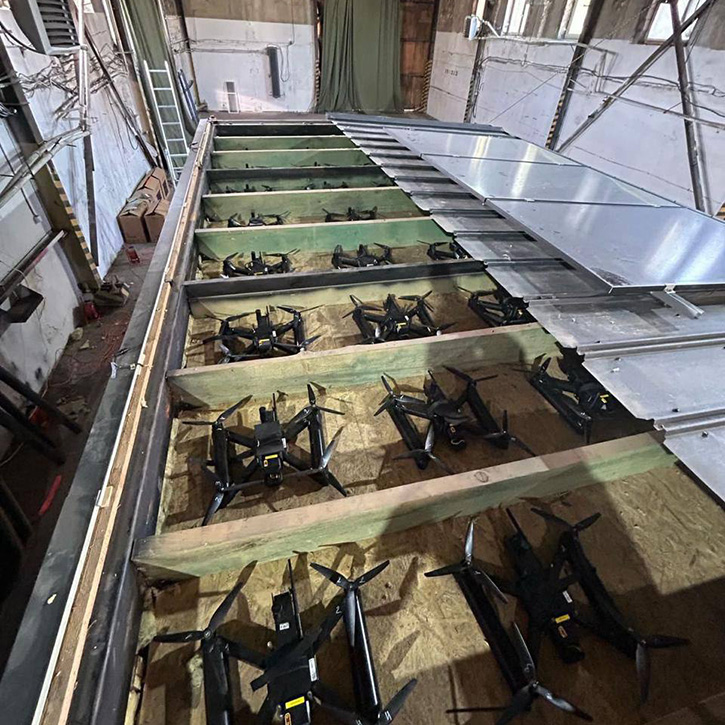 Operational Overview and Planning
Operational Overview and Planning
Under tight secrecy, the SBU repurposed standard cargo containers by installing wooden stowage cells for drones, photovoltaic arrays to maintain battery charging, and satellite communications uplinks. Ukrainian sources confirm that these containers were likely assembled and loaded on Russian soil, masking their true purpose until launch day. The entire operation resembles, in some form, Israel’s “supply chain operations” that provided Hezbollah with explosive personal radios and pagers.
The drones were also smuggled from Ukraine and most likely assembled in safe warehouses in Russia. Russian sources claim that geolocation indicates the Ukrainian drone assembly facility depicted in these photos was a rented warehouse in Chelyabinsk, a village near the Kazakhstan border.
Once assembly and setup were completed, the containers were loaded onto flatbed trucks (possibly rented in Russia) and transported across thousands of kilometers, capitalizing on the vastness of Russian territory.
Once in proximity to the target airbases, remote signals triggered roof-hatch removal, allowing FPV drones to launch in rapid succession toward high-value aircraft parked on the aprons.
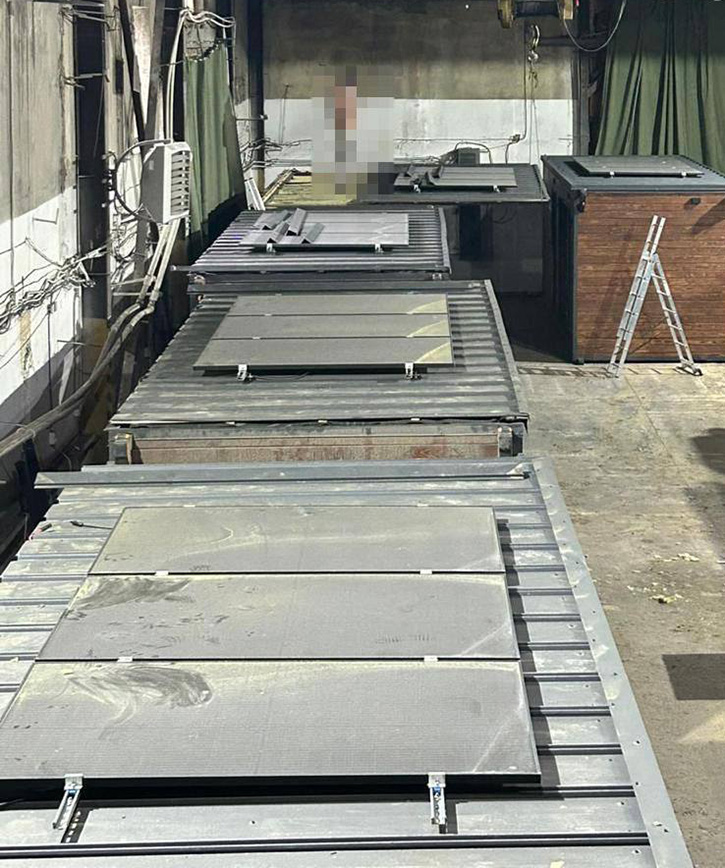
Scope of the Strike
Simultaneous strikes targeted four major Russian airbases:
Belaya Air Base (Irkutsk Oblast, Siberia): Approximately 4,300 km from Ukraine, Belaya hosts Tu-95MS “Bear” and Tu-22M3 “Backfire” bombers, alongside A-50 “Mainstay” AEW&C aircraft, critical for Russia’s strategic aviation.
Olenya Air Base (Murmansk Oblast): Roughly 2,000 km from Ukraine, Olenya supports Arctic-region bomber sorties.
Dyagilevo Air Base (Ryazan Oblast): Home to Tu-22M3 and Tu-160 “Blackjack” platforms used for long-range missile strikes.
Ivanovo Air Base (Ivanovo Oblast): A key node in Russia’s power projection network for strategic aviation assets.
Drone imagery and video shared by Ukrainian authorities show large bombers engulfed in flames and plumes of smoke rising from multiple aprons. Although Russian officials have provided limited confirmation, Ukrainian statements claim that 41 aircraft were neutralized, with estimated losses exceeding $2 billion.
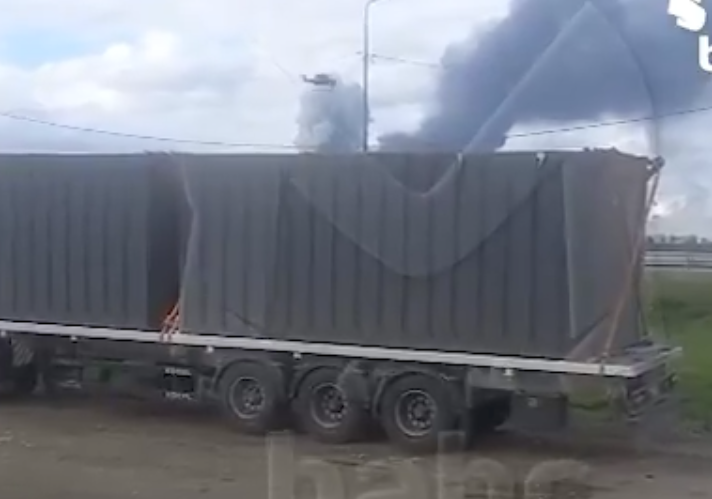
Execution and Methodology
Each containerized launch module was camouflaged to resemble a standard freight container. Inside, FPV drones were pre-assembled and pre-programmed with automatic target recognition (ATR) algorithms trained on characteristic signatures of Russian bombers. At launch time, remote commands opened the hatches and released the drones. Under real-time control via video links—augmented by satellite relays or utilizing local Russian cellular networks—the operators guided the drones to lock on specifically vulnerable areas of the parked aircraft. Some sources indicate the use of fiber-optical drones, but this is not evident from the available videos and images. The combination of ATR and FPV control enabled precise kinetic strikes before Russian air defenses could react, demonstrating Ukraine’s ability to project unmanned systems deep into Russian territory.
Local authorities in Irkutsk and Murmansk acknowledged drone incursions but downplayed their impact. Russian air defense batteries reportedly engaged the swarms, yet eyewitness accounts suggest that the systems were overwhelmed by the speed and number of attacking UAS. Russian media outlets minimized reported losses, while independent analysts noted significant vulnerabilities in Russian rear-area air defenses. Notably, the “Web” operation coincided with a massive Russian drone and missile salvo—over 470 UAS and multiple cruise missiles—launched at Ukrainian targets the same night, indicating reciprocal escalation in multi-domain drone warfare.
After all the drones cleared the launch pad, the container exploded. According to Ukraine sources, some modules operated fixed-wing drones, but these configurations could not be confirmed.

Strategic and Operational Implications
Neutralizing more than 40 Tu-95MS, Tu-22M3, and Tu-160 bombers—as well as at least one A-50 AEW&C platform—strikes at the core of Russia’s long-range strike capability. The A-50 fleet numbers fewer than ten worldwide; losing a third of these assets further degrades Russia’s aerial situational awareness. In the short term, Russia will face reduced sortie rates and limited cruise missile deployments against Ukrainian targets. For Ukraine, Operation “Web” exemplifies an evolved drone warfare doctrine: blending extended operational planning with technical innovation in containerized UAS teams. The success of this mission will likely prompt Russia to redeploy scarce S-400 and S-350 batteries, reinforce base perimeters with additional short-range air defenses, and harden satellite communications links against jamming.
Operation “Web” occurred just weeks before scheduled peace talks in Istanbul, potentially aimed at strengthening Ukraine’s negotiating position. The reciprocal drone barrages underscore a shifting paradigm in which unmanned systems play a decisive role in strategic leverage. Moving forward, both sides are expected to invest heavily in electronic warfare countermeasures, aerial perimeter defenses, and counter-UAS strategies. The “Web” operation also signals to other actors—state and non-state—that even rear areas once deemed secure are now vulnerable to deep-strike drone tactics.
As drone technology becomes more accessible, defense planners worldwide must reassess conventional assumptions about rear-area sanctuaries. Operation “Web” stands as a testament to the changing nature of aerial warfare: where a relatively small fleet of FPV drones can inflict outsized damage on critical strategic assets and redefine force-protection priorities across vast distances.

